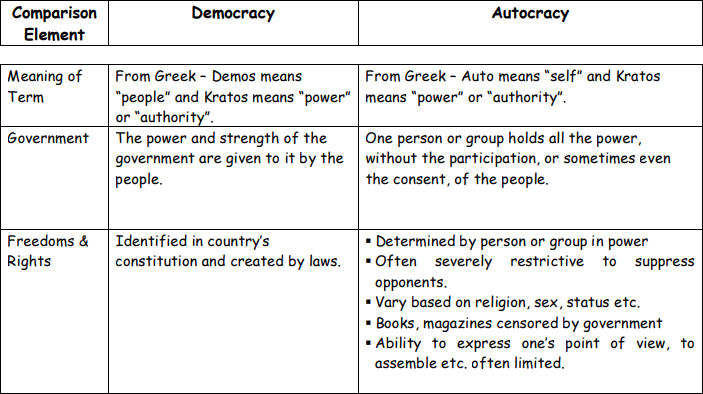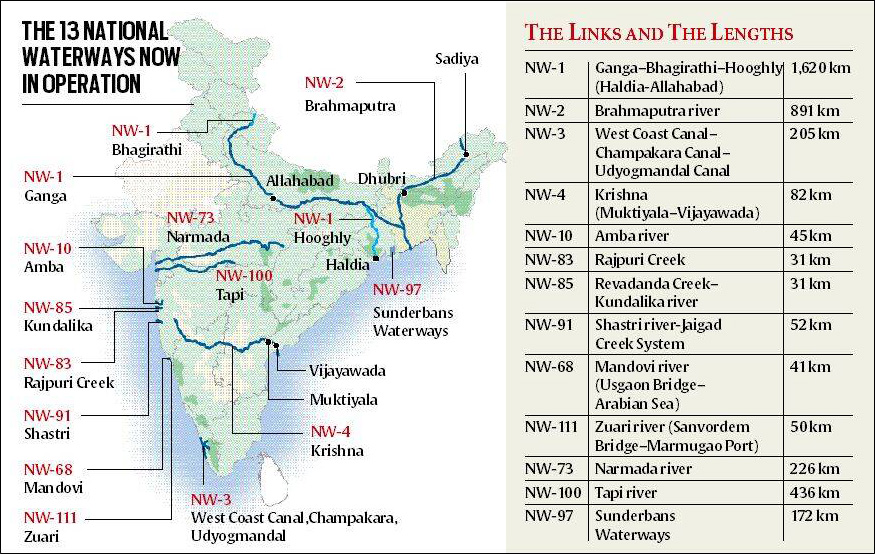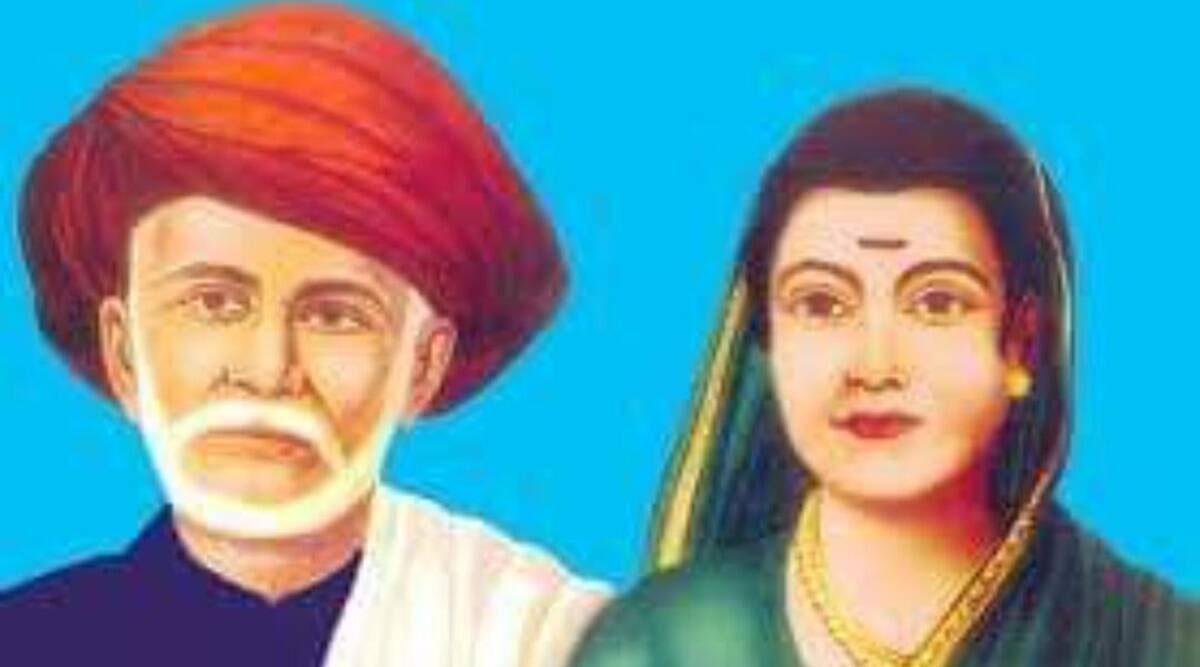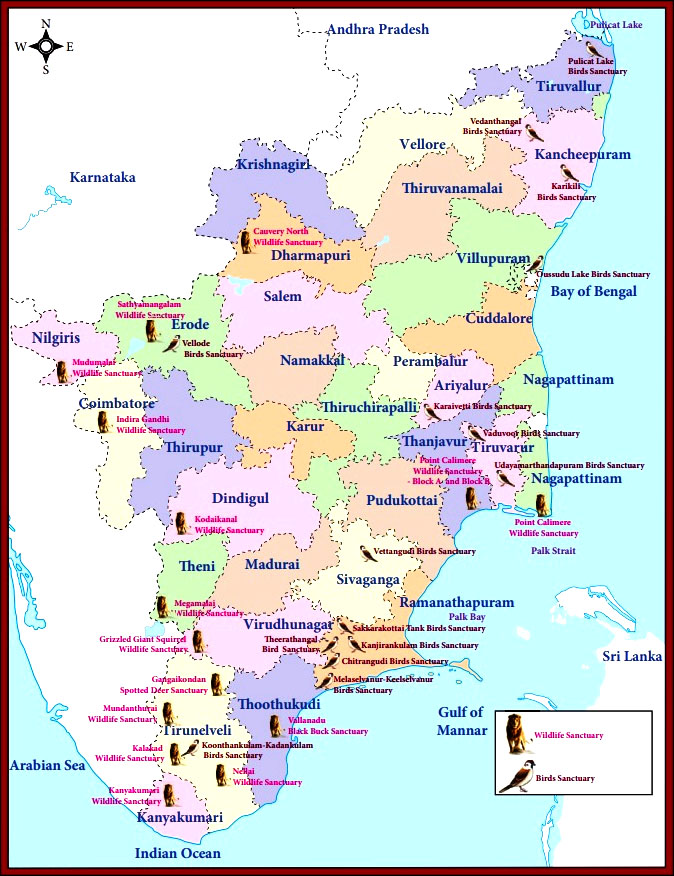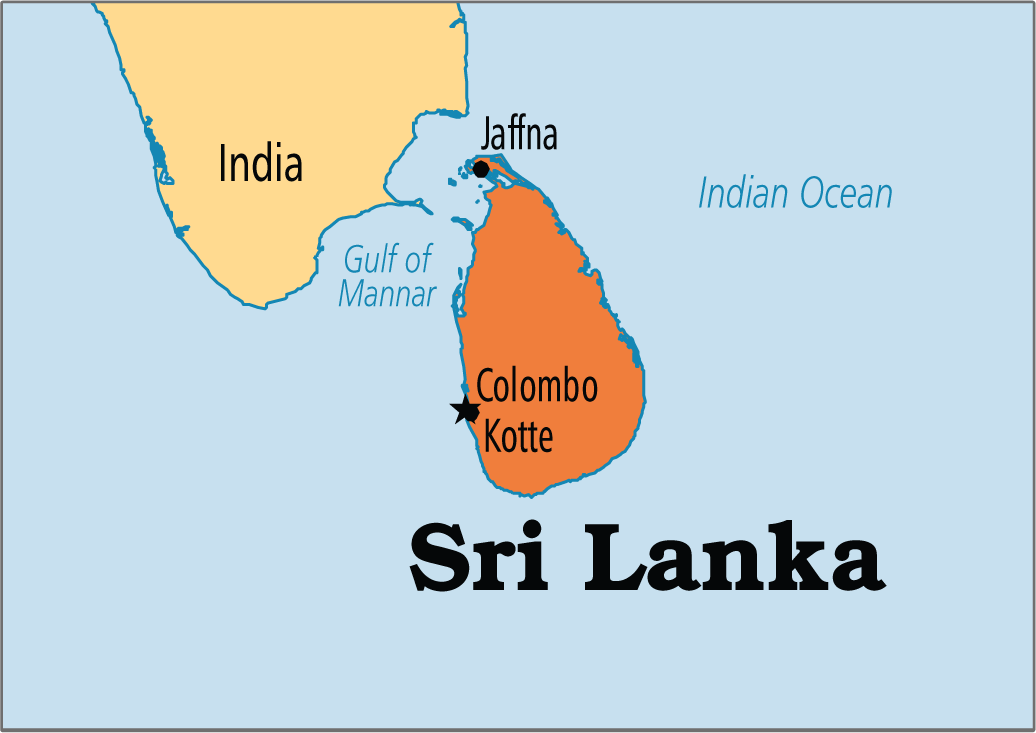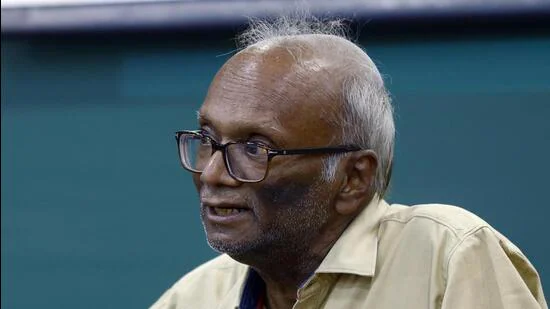SAMARTH Initiative
For Prelims: SAMARTH, Women's Day, MSME, NSIC, United Nation, Fundamental Rights, Fundamental Duties, World Conferences on Women.
For Mains: Gender, Issues Relating to Development. Issues Related to Women, Government Policies and Intervention.
Why in News?
Recently, on the occasion of International Women’s Day 2022, the Union Minister for Micro, Small and Medium Enterprises (MSMEs), launched a Special Entrepreneurship Promotion Drive for Women -"SAMARTH" .
What is the SAMARTH Initiative?
- Under the Samarth initiative of the Ministry, following benefits will be available to aspiring and existing women entrepreneurs:
- 20% Seats in free Skill Development Programs organised under skill development schemes of the Ministry will be allocated for Women.
- 20% of MSME Business Delegations sent to domestic & international exhibitions under the schemes for Marketing Assistance implemented by the Ministry will be dedicated to women owned MSMEs.
- 20% Discount on annual processing fee on National Small Industries Corporation’s (NSIC) Commercial Schemes.
- NSIC is a Government of India Enterprise under the Ministry of MSME.
- Special Drive for registration of women-owned MSMEs under Udyam Registration.
- Through this initiative, the Ministry of MSME is focusing on providing Skill Development and Market Development Assistance to women.
- More than 7500 women candidates from rural and sub- urban areas will be trained in the FY 2022-23.
- Besides, thousands of women will be getting marketing opportunities to showcase their products in domestic and international exhibitions.
- Also, to enhance the participation of women entrepreneurs in Public Procurement, a special discount of 20% shall also be offered on annual processing fee on NSIC’s following commercial schemes during the year 2022-23:
- Single Point Registration Scheme
- Raw Material Assistance and Bill Discounting
- Tender Marketing
- B2B Portal msmemart.com
What is International Women's Day?
- About:
- It is celebrated annually on 8th March. It includes:
- Celebration of women's achievements,
- Raising awareness about women's equality,
- Lobbying for accelerated gender parity,
- Fundraising for female-focused charities, etc.
- It is celebrated annually on 8th March. It includes:
- Brief History:
- Women’s Day was first celebrated back in 1911 by Clara Zetkin, who was a German. The roots of the celebration had been in the labour movement.
- It was only in 1913, however, that the celebrations were shifted to 8th March, and it has remained that way ever since.
- International Women's Day was celebrated for the first time by the United Nations(UN) in 1975.
- In December 1977, the General Assembly adopted a resolution proclaiming a UNs Day for Women’s Rights and International Peace to be observed on any day of the year by Member States, in accordance with their historical and national traditions.
- 2022 Theme:
- 'Gender equality today for a sustainable tomorrow'.
- Related Data:
- According to the UN, legal restrictions have kept 2.7 billion women from accessing the same choice of jobs as men.
- As of 2019, less than 25% of parliamentarians were women.
- One in three women experience gender-based violence.
- In 2019, before the Covid-19 pandemic, female labour force participation in India was 20.5%, according to International Labour Organisation (ILO) estimates. Comparable estimates for males was 76%.
- In the World Economic Forum’s Global Gender Gap Index (which measures progress towards gender parity), India is one of the worst performers in South Asia, it is now ranked 140 among 156 countries in 2021.
- As per the National Family Health Survey (NFHS)-5, as many as 57% women aged 15-49 were anaemic in 2019-21, compared to 53% in 2015-16.
- According to the UN, legal restrictions have kept 2.7 billion women from accessing the same choice of jobs as men.
What are the Safeguards for Women in India?
- Constitutional Safeguards:
- Fundamental Rights: It guarantees all Indians the right to equality (Article 14), no discrimination by the State on the basis of gender (Article 15(1)) and special provisions to be made by the State in favour of women (Article 15(3)).
- Fundamental Duties: The Constitution imposes a fundamental duty on every citizen through Articles 51 (A)(e) to renounce practices derogatory to dignity of women.
- Legislative Framework:
- Protection of Women from Domestic Violence Act, 2005: It provides victims of domestic violence with a means for practical remedy through prosecution.
- The Dowry Prohibition Act, 1961: It prohibits the request, payment or acceptance of a dowry.
- The Sexual Harassment of Women at Workplace (Prevention, Prohibition, and Redressal) Act, 2013: This legislative act seeks to protect women from sexual harassment at their place of work.
- Related Schemes: Mahila e-haat, Women Technology Park, Gender Advancement for Transforming Institutions (GATI), etc.
Are there any World Conferences on Women?
- The UN has organised 4 world conferences on women. These took place in
- Mexico City, 1975
- Copenhagen, 1980
- Nairobi, 1985
- Beijing, 1995
- The 4th World Conference on Women (WCW), held in Beijing, was one of the largest ever gatherings of the UNs, and a critical turning point in the world’s focus on gender equality and the empowerment of women.
- The Beijing Declaration is an agenda for women’s empowerment and considered the key global policy document on gender equality.
- It sets strategic objectives and actions for the advancement of women and the achievement of gender equality in 12 critical areas of concern like women and health, women in power and decision-making, the girl-child, women and the environment.
- Recently, the United Nations Development Programme (UNDP) has proposed a Temporary Basic Income (TBI) for poor women in developing countries to help them cope with the effects of the coronavirus pandemic and alleviate the economic pressures they face every day.
PYQ
‘Beijing Declaration and Platform for Action’, often seen in the news, is (2015)
(a) a strategy to tackle the regional terrorism, an outcome of a meeting of the Shanghai Cooperation Organization.
(b) a plan of action for sustainable economic growth in the Asia-Pacific Region, an outcome of the deliberations of the Asia-Pacific Economic Forum.
(c) an agenda for women’s empowerment, an outcome of a World Conference convened by the United Nations.
(d) a strategy to combat wildlife trafficking, a declaration of the East Asia Summit.
Ans: (c)
Democracy Report 2022
For Prelims: Democracy Report 2022, India's Rank.
For Mains: Threat to Democracy and related issues, Findings of the Democracy Report 2022.
Why in News?
According to the latest report from the V-Dem Institute at Sweden’s University of Gothenburg, the level of democracy enjoyed by the average global citizen in 2021 is down to 1989 levels, with the democratic gains of the post-Cold War period eroding rapidly in the last few years.
- The Report is titled ‘Democracy Report 2022: Autocratisation Changing Nature?’.
- Varieties of Democracy (V-Dem) produces the largest global dataset on democracy with over 30 million data points for 202 countries from 1789 to 2021.
- Earlier, the Global State of Democracy Report, 2021 was released by the International Institute for Democracy and Electoral Assistance (International-IDEA).
What Parameters were used to Assess the Status of a Democracy?
- The report classifies countries into four regime types based on their score in the Liberal Democratic Index (LDI):
- Liberal Democracy, Electoral Democracy, Electoral Autocracy, and Closed Autocracy.
- The LDI captures both liberal (individual and minority rights) and electoral aspects (free and fair elections) of a democracy based on 71 indicators that make up the Liberal Component Index (LCI) and the Electoral Democracy Index (EDI).
- The LCI measures aspects such as protection of individual liberties and legislative constraints on the executive, while the EDI considers indicators that guarantee free and fair elections such as freedom of expression and freedom of association.
- In addition, the LDI also uses an Egalitarian Component Index (to what extent different social groups are equal), Participatory Component Index (health of citizen groups, civil society organisations), and Deliberative Component Index (whether political decisions are taken through public reasoning focused on common good or through emotional appeals, solidarity attachments, coercion).
What are the Main Findings of the Report?
- Top Performance:
- Sweden topped the LDI index, other Scandinavian countries such as Denmark and Norway, along with Costa Rica and New Zealand make up the top five in liberal democracy rankings.
- India’s Performance:
- India is part of a broader global trend of an anti-plural political party driving a country’s autocratisation.
- It was ranked 93rd in the LDI, India figures in the “bottom 50%” of countries.
- It has slipped further down in the Electoral Democracy Index, to 100, and even lower in the Deliberative Component Index, at 102.
- In South Asia, India is ranked below Sri Lanka (88), Nepal (71), and Bhutan (65) and above Pakistan (117) in the LDI.
- Spreading Autocratisation:
- Autocratisation is spreading rapidly, with a record of 33 countries autocratising.
- Signaling a sharp break from an average of 1.2 coups per year, 2021 saw a record 6 coups, resulting in 4 new autocracies: Chad, Guinea, Mali and Myanmar.
- While the number of liberal democracies stood at 42 in 2012, their number has shrunk to their lowest level in over 25 years, with just 34 countries and 13% of the world population living in liberal democracies.
- Closed autocracies, or dictatorships, rose from 25 to 30 between 2020 and 2021.
- Electoral Autocracy Most Common Regime Type:
- The world today has 89 democracies and 90 autocracies, electoral autocracy remains the most common regime type, accounting for 60 countries and 44% of the world population or 3.4 billion people.
- Electoral democracies were the second most common regime, accounting for 55 countries and 16% of the world population.
PYQ
Which one of the following factors constitutes the best safeguard of liberty in a liberal democracy?
(a) A committed judiciary
(b) Centralization of powers
(c) Elected government
(d) Separation of powers
Ans: (d)
What does the report say about the Changing Nature of Autocratisation?
- Biggest Drivers of Autocratisation:
- One of the biggest drivers of autocratisation is “toxic polarisation”.
- Polarisation has been defined as a phenomenon that erodes respect of counter-arguments and associated aspects of the deliberative component of democracy.
- It is a dominant trend in 40 countries, as opposed to 5 countries that showed rising polarisation in 2011.
- Toxic levels of polarisation contribute to electoral victories of anti-pluralist leaders and the empowerment of their autocratic agendas.
- Noting that “polarisation and autocratisation are mutually reinforcing”, the report states that “measures of polarisation of society, political polarisation, and political parties’ use of hate speech tend to systematically rise together to extreme levels.”
- One of the biggest drivers of autocratisation is “toxic polarisation”.
- Tools used to Sharpen Polarisation:
- “Misinformation” has been identified as a key tool deployed by autocratising governments to sharpen polarisation and shape domestic and international opinion.
- Repression of civil society and censorship of media were other favoured tools of autocratising regimes.
- While freedom of expression declined in a record 35 countries in 2021, with only 10 showing improvement, repression of Civil Society Organisations (CSOs) worsened in 44 countries over the past ten years, “putting it at the very top of the indicators affected by autocratisation”.
- Also, in 37 countries, direct government control over CSOs’ existence moved in an authoritarian direction — “evidence of the far-ranging weakening of civil society around the world.”
- Decisive autonomy for the Electoral Management Body (EMB) deteriorated in 25 countries.
PYQ
Democracy’s superior virtue lies in the fact that it calls into activity (2017)
(a) the intelligence and character of ordinary men
and women.
(b) the methods for strengthening executive leadership.
(c) a superior individual with dynamism and vision.
(d) a band of dedicated party workers.
Ans: (a)
Artificial Intelligence in Judiciary
For Prelims: eCourts project, Machine Learning (ML) and Artificial Intelligence (AI), National Judicial Data Grid (NJDG), SUPACE
For Mains: Use of Artificial Intelligence in Judiciary, data protection, privacy.
Why in News?
Recently, the Law Minister has said that for implementing phase two of the eCourts project, there is a need to adopt new, cutting edge technologies of Machine Learning (ML) and Artificial Intelligence (AI) to increase the efficiency of the justice delivery system.
- Also, to explore the use of AI in the judicial domain, the Supreme Court of India has constituted an Artificial Intelligence Committee.
- The committee has identified application of AI technology in Translation of judicial documents, Legal research assistance and Process automation.
What is eCourts Project?
- About:
- It was conceptualized with a vision to transform the Indian Judiciary by ICT (Information and Communication Technology) enablement of Courts.
- It is a pan-India Project, monitored and funded by the Department of Justice, Ministry of Law and Justice, for the District Courts across the country.
- Objectives of the Project:
- To provide efficient & time-bound citizen-centric services delivery.
- To develop, install & implement decision support systems in courts.
- To automate the processes to provide transparency and accessibility of information to its stakeholders.
- To enhance judicial productivity, both qualitatively & quantitatively, to make the justice delivery system affordable, accessible, cost-effective, predictable, reliable and transparent.
What is the Need of Technology in Judiciary?
- Pendency of Cases: The recent National Judicial Data Grid (NJDG) shows that 3,89,41,148 cases are pending at the District and Taluka levels and 58,43,113 are still unresolved at the high courts.
- Such pendency has a spin-off effect that takes a toll on the efficiency of the judiciary, and ultimately reduces peoples’ access to justice.
What are Examples of Use of Technology in Judiciary?
- Virtual Hearing: Over the course of the Covid-19 pandemic, the use of technology for e-filing, and virtual hearings has seen a dramatic rise.
- SUVAS (Supreme Court Vidhik Anuvaad Software): It is an AI system that can assist in the translation of judgments into regional languages.
- This is another landmark effort to increase access to justice.
- SUPACE (Supreme Court Portal for Assistance in Court Efficiency): It was recently launched by the Supreme Court of India.
- Designed to first understand judicial processes that require automation, it then assists the Court in improving efficiency and reducing pendency by encapsulating judicial processes that have the capability of being automated through AI.
- Similar Global Initiatives:
- US: COMPAS (Correctional Offender Management Profiling for Alternative Sanctions).
- UK: HART (Harm Assessment Risk Tool).
- China/Mexico/Russia: Giving legal advice, approving pensions.
- Estonia: Robot judge for adjudicating small claims.
- Malaysia: Supporting sentencing decisions .
- Austria: Sophisticated document management.
- Argentina/Colombia: Prometea (Identifying urgent cases within minutes).
- Singapore: Transcribing court hearings in real-time.
What are the possible uses of AI & ML in the Judiciary?
- Increasing efficiency of Judiciary: It has the possibility of helping judges conduct trials faster and more effectively thereby reducing the pendency of cases.
- It will assist legal professionals in devoting more time in developing better legal reasoning, legal discussion and interpretation of laws.
- Creating Judge Analytics: After “training” the application on a huge historical set of precedents, the application is capable of highlighting key points that are relevant in specific contracts.
- This will help analyse thousands of previous cases and create a ‘judge analytics’.
What is AI and ML?
- Artificial Intelligence:
- It describes the action of machines accomplishing tasks that have historically required human intelligence.
- It includes technologies like machine learning, pattern recognition, big data, neural networks, self algorithms etc.
- AI involves complex things such as feeding a particular data into the machine and making it react as per the different situations.
- It is basically about creating self-learning patterns where the machine can give answers to the never answered questions like a human would ever do.
- AI technology helps in analyzing data and thus can improve the efficiency of systems like power management in cars, mobile devices, weather predictions, video and image analysis.
- Example (Use): Self driving cars.
- Machine Learning:
- Machine learning (ML) is a type of artificial intelligence (AI) that allows software applications to become more accurate at predicting outcomes without being explicitly programmed to do so.
- Machine learning algorithms use historical data as input to predict new output values.
Way Forward
- Side-effects of AI: As AI technology grows, concerns about data protection, privacy, human rights and ethics will pose fresh challenges and will require great self-regulation by developers of these technologies.
- It will also require external regulation by the legislature through statute, rules, regulation and by the judiciary through judicial review and constitutional standards.
PYQ
Q. With the present state of development, Artificial Intelligence can effectively do which of the following? (2020)
- Bring down electricity consumption in industrial units
- Create meaningful short stories and songs
- Disease diagnosis
- Text-to-Speech Conversion
- Wireless transmission of electrical energy
Select the correct answer using the code given below:
(a) 1, 2, 3 and 5 only
(b) 1, 3 and 4 only
(c) 2, 4 and 5 only
(d) 1, 2, 3, 4 and 5
Ans: (b)
Brahmaputra (NW2) gets connected with Ganga (NW1)
For Prelims: Inland Waterways, Indo-Bangladesh (Sonamura-Daudkandi), Indo-Myanmar protocol (Kaladan).
For Mains: Inland Waterways Network advantages and challenges, Initiatives taken for Inland Waterways
Why in News?
Recently, the Union Minister of Ports, Shipping & Waterways received the maiden voyage of food-grains from Patna to Pandu port via Bangladesh in Guwahati (Assam).
- Inland Waterways Authority of India (IWAI) is planning to run a fixed schedule sailing between NW1 and NW2 heralding a new age of inland water transport for Assam & the Northeast India.
- The Inland Vessels Bill, 2021, was also approved to regulate safety, security and registration of inland vessels.
What is the Significance of this Achievement?
- The start of cargo movement through ships through Indo Bangladesh Protocol Route (IBRP) marks the beginning of a new age of economic prosperity for the whole region of Northeast.
- This will pave the way for growth & development of inland water transport.
- This will also provide the business community a viable, economic & ecological alternative and will also play a pivotal role in energising India’s northeast as the engine of growth.
- The sustained effort to rejuvenate the historical trade routes via Bangladesh got a fillip under PM Gati Shakti.
- It has been envisioned that Northeast will slowly turn & convert into a connectivity hub.
- The integrated development plan, under PM Gati Shakti, has been envisioned in order to amp up swift movement of cargo over Brahmaputra.
What are Inland Waterways?
- About:
- India has about 14,500 km of navigable waterways which consist of rivers, canals, backwaters, creeks, etc.
- As per the National Waterways Act 2016, 111 waterways have been declared as National Waterways (NWs).
- NW-1: Ganga-Bhagirathi-Hooghly River System (Prayagraj-Haldia) with length 1620 km is the longest National Waterway in India.
- The Inland Waterways Authority of India (IWAI) is implementing the Jal Marg Vikas Project (JMVP) for capacity augmentation of navigation on the Haldia-Varanasi stretch of Ganga (part of NW-1) with the technical and financial assistance of the World Bank.
- Related Steps taken:
- The waterways have also been proposed to be linked to the eastern and western Dedicated Freight Corridors (DFCs), as well as the Sagarmala Project, which aims to promote port-led direct and indirect development.
- Further, the provisions of the Indo-Bangladesh (Sonamura-Daudkandi) and Indo-Myanmar protocol (Kaladan) permitting transhipment of goods through Bangladesh and Myanmar waters – which, in many cases, are a continuum of India’s inland waterways – enabling quicker shipments and deeper market penetration in India’s North East.
What is the Scope of Inland Waterways in India?
- About 55 million tonnes of cargo is being moved annually by IWT (Inland Water Transport), a fuel-efficient and environment-friendly mode.
- However, freight transportation by waterways is highly underutilized in the country as compared to developed countries.
- Its operations are currently restricted to a few stretches in the Ganga-Bhagirathi-Hooghly rivers, the Brahmaputra, the Barak river (northeastern India), the rivers in Goa, the backwaters in Kerala, inland waters in Mumbai and the deltaic regions of the Godavari - Krishna rivers.
- Besides these organized operations by mechanized vessels, country boats of various capacities also operate in various rivers and canals and substantial quantum of cargo and passengers are transported in this unorganized sector as well.
- In India, IWT has the potential to supplement the overburdened railways and congested roadways. In addition to cargo movement, the IWT sector also provides a convenient function in related activities such as carriage of vehicles {on Roll-on-Roll-off (Ro-Ro) mode of cross ferry} and tourism.
What are the Advantages of an Inland Waterways Network?
- Cheaper Mode of Transportation:
- Waterways are a cheaper mode of transportation vis-à-vis the available alternatives, significantly reducing the point-to-point cost of goods transportation.
- It also reduces time, cost of transportation of goods and cargos, as well as congestion and accidents on highways.
- The network requires no green field investment, but only capex (capital expenditure) for improvement/upgradation.
- Seamless Interconnectivity:
- They are expected to also “help create seamless interconnectivity connecting hinterlands along navigable river coasts and coastal routes” and “are likely to play a crucial role in connecting the north-eastern states to the mainland.”
What are the Implementation Challenges?
- No Navigability throughout the Year:
- Some rivers are seasonal and do not offer navigability through the year. Around 20 out of the 111 identified national waterways have reportedly been found unviable.
- Intensive Capital and Maintenance Dredging:
- All the identified waterways require intensive capital and maintenance dredging, which could be resisted by the local community on environmental grounds, including displacement fears, thereby posing implementation challenges.
- Other Uses of water:
- Water also has important competing uses, viz. need for living as well as for irrigation, power generation etc. It would not be possible for the local government/others to overlook these needs.
- Exclusive Jurisdiction of the Central Government:
- The exclusive jurisdiction of the Central Government is only in regard to shipping and navigation on inland waterways declared to be ‘national waterways’ by an act of Parliament.
- Utilisation/sailing of vessels, in other waterways, is within the ambit of the concurrent list or is in the jurisdiction of the respective state governments.
Way Forward
- Water being a scarce resource with competing needs, the use of water for transport may be difficult to justify. However, considering the various advantages and taking into account the commercial viability, the numerous opportunities for employment and economic development, the National Waterways can be effectively used as the way forward.
- An effective waterways network would necessitate drawing up a well-coordinated strategy on lines of complementarity between the national network and other waterways, not declared as such, as well as between waterways and roadways/railways.
- The strategy should closely look into the various undercurrents, including competing uses/needs, possible local resistance and also work closely and in coordination with local governments for quick and successful implementation of this important national project.
Three Capital Issue of Andhra Pradesh
For Prelims: Parliament, Rajya Sabha, Article 226, Ist Schedule, IVth Schedule
For Mains: Multiple State Capital Idea and its impact on Governance, Reasons for the Demand of the Multiple State Capital .
Why in News?
Recently, the Andhra Pradesh High Court directed the State government to construct and develop Amaravati, the capital city of the State, and the capital region within six months.
What is the Background?
- The Andhra Pradesh Legislative Assembly passed the AP Decentralisation and Inclusive Development of All Regions Bill, 2020.
- The Bill intends to give shape to the state government's plan of having three capitals — executive capital in Visakhapatnam, legislative in Amaravati and judicial in Kurnool.
- According to the government, multiple state capitals will allow the development of several regions of the state and hence leading to inclusive growth.
- However, previously the Andhra government had acquired around 30 thousand acres of land approximately from the farmers in and around the Amaravati region. So the decision of changing the capital may affect most of the farmers living out there.
- In November, 2021, the Andhra Pradesh Decentralisation and Inclusive Development of All Regions Repeal Bill, 2021, aiming to repeal the earlier laws that stipulated a three-capitals plan for the State was passed.
- It was promised to introduce a “better” and “comprehensive” Bill after plugging loopholes in the previous version.
What was the Current HC Ruling?
- The High Court held that the State legislature lacked the competence to make any legislation for shifting, bifurcating or trifurcating the capital.
- The court directed the government and the Capital Region Development Authority (CRDA) to discharge their duties enshrined under the A.P. Capital Regional Development Authority (CRDA) Act and Land Pooling Rules.
- It directed the State to develop the reconstitutional plots belonging to landowners and hand them over to landowners within three months.
- The Andhra Pradesh Capital Region Development Authority Act, 2014 under Section 10(1)(c)(i), provides for regulation of development activities in accordance with the development plans and regulations, and to bring aesthetics, efficiency and economy in the process of development within the jurisdiction of Capital Region Development Authority.
- The HC held the view that the agreement signed between the farmers and the CRDA is a Development Agreement-cum-Irrevocable General Power of Attorney and it is a statutory contract.
- The violation of terms and conditions by the respondents — State and APCRDA — warrants interference of this court, while exercising power under Article 226 of the Constitution.
- Article 226 of the Constitution empowers a high court to issue writs including habeas corpus, mandamus, certiorari, prohibition and quo warranto for the enforcement of the fundamental rights of the citizens and for any other purpose.
- The violation of terms and conditions by the respondents — State and APCRDA — warrants interference of this court, while exercising power under Article 226 of the Constitution.
- The court held that Parliament alone is competent to deal with the setting up of legislature, executive and judicial organs of the state, and this was implicit in the language employed in Article 4 of the Constitution.
- Article 4 allows for consequential changes in the Ist Schedule i.e. names of the States in the Union of India and IVth Schedule i.e. a number of seats allotted in the Rajya Sabha for each state.
What are the Concerns related to Multiple States?
- Balancing Legislative and Executive Function:
- Separation of executive and legislative capital can be challenging. In the Parliamentary system of government, which has been adopted in India, functions of the executive and the legislature are closely connected. For example,
- When the legislative assembly is in session, administrative officers are required all the time for the presentation of the bill, for briefing the ministers, etc.
- When the legislative assembly is not in session, the decision making by the executive requires a lot of input from various sources including the legislators who are the representatives of the people.
- Separation of executive and legislative capital can be challenging. In the Parliamentary system of government, which has been adopted in India, functions of the executive and the legislature are closely connected. For example,
- Logistically difficult:
- The development of a region can be done through policy interventions like industrial policy. However, separating the capitals can be against the convenience of the administration as well as the people. Also, it will be logistically difficult to implement.
Way Forward
- Decentralization in the State should take place by empowering the local governments i.e. the Panchayats and Municipal Corporations which were constituted after the enactment of the 73rd and the 74th Constitutional Amendment Act.
- Multiple capitals should not be used as an instrument for the development of the region.
- The development of the region can be brought by making an investment in the manufacturing and service sectors, bringing different policies benefiting the farmers and ease of doing business, development of the infrastructure, development of the social-cultural institutions such as universities, hospitals, etc.
Savitribai and Jyotirao Phule
For Prelims: Savitribai and Jyotirao Phule, Dr. B.R. Ambedkar, Mahatma Gandhi, Satyashodhak Samaj (The Truth-Seeker’s Society).
For Mains: Legacy of Savitribai and Jyotirao Phule, caste- and gender-based discrimination.
Why in News?
Recently, Maharashtra Governor was criticised for allegedly mocking 19th century social reformers Savitribai and Jyotirao Phule for “getting married at a young age”.
- Mahatma Jyotirao and Savitribai Phule stand out as an extraordinary couple in the social and educational history of India.
- They spearheaded path-breaking work towards female education and empowerment, and towards ending caste- and gender-based discrimination.
Who were Savitribai and Jyotirao Phule?
- In 1840, at a time when child marriages were common, Savitri at the age of ten was married to Jyotirao, who was thirteen years old at the time.
- The couple later in life strove to oppose child marriage and also organised widow remarriages.
- Jyotirao Phule:
- He was an Indian social activist, thinker, anti-caste social reformer and writer from Maharashtra.
- He is also known as Jyotiba Phule.
- Education: In 1841, Phule was enrolled at the Scottish Missionary High School (Pune), where he completed education.
- Ideology: His Ideology was based on: Liberty, Egalitarianism, Socialism.
- Phule was influenced by Thomas Paine’s book titled The Rights of Man and believed that the only solution to combat the social evils was the enlightenment of women and members of the lower castes.
- Major Publications: Tritiya Ratna (1855), Powada: Chatrapati Shivajiraje Bhosle Yancha (1869), Gulamgiri (1873), Shetkarayacha Aasud (1881).
- Title of Mahatma: He was bestowed with the title of Mahatma on 11th May, 1888 by a Maharashtrian social activist Vithalrao Krishnaji Vandekar.
- Social Reforms: Jyotirao, the revolutionary that he was, observed the lack of opportunities for education for young girls and women.
- He started to educate his wife at home and trained her to become a teacher.
- He realised the pathetic conditions of widows and established an ashram for young widows and eventually became an advocate of the idea of Widow Remarriage.
- He attacked the orthodox Brahmins and other upper castes and termed them as "hypocrites".
- In 1868, Jyotirao constructed a common bathing tank outside his house to exhibit his embracing attitude towards all human beings and wished to dine with everyone, regardless of their caste.
- He started awareness campaigns that ultimately inspired the likes of Dr. B.R. Ambedkar and Mahatma Gandhi, stalwarts who undertook major initiatives against caste discrimination later.
- It is believed by many that it was Phule who first used the term ‘Dalit’ for the depiction of oppressed masses often placed outside the ‘varna system’.
- He was an Indian social activist, thinker, anti-caste social reformer and writer from Maharashtra.
- Savitribai Phule:
- In 1852, Savitribai started the Mahila Seva Mandal to raise awareness about women’s rights.
- Savitribai called for a women’s gathering where members from all castes were welcome and everybody was expected to sit on the same mattress.
- She published Kavya Phule in 1854 and Bavan Kashi Subodh Ratnakar in 1892.
- In her poem, Go, Get Education, she urges the oppressed communities to get an education and break free from the chains of oppression.
- She simultaneously campaigned against child marriage, while supporting widow remarriage.
- She initiated the first Satyashodhak marriage—a marriage without a dowry, Brahmin priests or Brahminical rituals in 1873.
What is their Legacy?
- Together, by 1848, the Phules started a school for girls, Shudras and Ati-Shudras in Poona.
- In the 1850s, the Phule couple initiated two educational trusts—the Native Female School, Pune and The Society for Promoting the Education of Mahars, Mangs and Etceteras—which came to have many schools under them.
- In 1853, they opened a care centre for pregnant widows to have safe deliveries and to end the practice of infanticide owing to social norms.
- The Balhatya Pratibandhak Griha (Home for the Prevention of Infanticide) started in their own house.
- The Satyashodhak Samaj (The Truth-Seeker’s Society) was established on 24th September, 1873 by Jyotirao-Savitribai and other like-minded people.
- The Samaj advocated for social changes that went against prevalent traditions, including economical weddings, inter-caste marriages, eradication of child marriages, and widow remarriage.
- Also, Satya shodhak samaj was founded with a purpose to give education to the lower castes, scheduled caste, scheduled tribes and made them aware of the exploiting tradition of society.
PYQ
Satya Shodhak Samaj organized (2016)
(a) a movement for upliftment of tribals in Bihar
(b) a temple-entry movement in Gujarat
(c) an anti-caste movement in Maharashtra
(d) a peasant movement in Punjab
Ans: (c)
Glycosmis Albicarpa
Why in News
A team of scientists from the Botanical Survey of India (BSI) has discovered a new gin berry species named Glycosmis albicarpa from the Kanyakumari Wildlife Sanctuary in Tamil Nadu.
- BSI, established in 1890, is the apex research organisation under the Ministry of Environment and Forests (MoEFCC) for carrying out taxonomic and floristic studies on wild plant resources of the country.
- It has the objective to explore plant resources of the country and to identify plant species with economic virtues.
What Is Glycosmis Albicarpa?
- The species is endemic to the southern Western Ghats.
- The species belongs to the Orange family, Rutaceae.
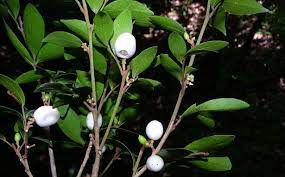
- Many of the related plants of these taxonomic groups are being utilised for their medicinal values and food.
- Most commonly related species of these plants are collected from the wild, mainly for local use as food and medicine.
- Berries of Glycosmis species have the unique characteristic of ‘gin aroma’ and have gained in popularity as an edible fruit.
- The species is also a larval host plant for butterflies like other species of Glycosmis.
What are the Key Points Related to Kanyakumari Wildlife Sanctuary?
- Kanyakumari Wildlife Sanctuary is a 402.4 km2 protected area in Kanyakumari district, Tamil Nadu.
- The virgin forests of Kanyakumari District were transferred from Kerala to Tamil Nadu on the 1st November 1956 as a result of the state reorganisation.
- Kanyakumari Forest Division came into existence from 1st April 1977.
- Kanyakumari Wildlife sanctuary with adjacent areas of Kalakkad Mundanthurai Tiger Reserve and Neyyar Wildlife Sanctuary of Kerala State constitutes the southernmost tip of Western Ghats.
- It is a tiger habitat. There are seven rivers that originate in this forest.
- The natural vegetation of this region represents biomes ranging from southern thorn forests, dry deciduous, moist deciduous, semi evergreen forests to ever green hill sholas with grassy downs.
- The Shola forests of South India derive their name from the Tamil word solai, which means a ‘tropical rainforest’.
- The Sholas are found in the upper reaches of the Nilgiris, Anamalais, Palni hills, Kalakadu, Mundanthurai and Kanyakumari in the states of Tamil Nadu and Kerala.
- The tract is exceedingly rich in wildlife harbouring a variety of animals such as Indian bison, elephants, rock pythons, lion tailed macaques etc. The avifauna, the reptilian and amphibian fauna of this region are also rich and diverse.
- This tip of the Indian peninsula is a unique geographic point surrounded by all three of the sub-continent's vast oceans – the Bay of Bengal, Indian Ocean and the Arabian Sea.
Protected Areas in Tamil Nadu
PYQ
Recently, our scientists have discovered a new and distinct species of banana plant which attains a height of about 11 metres and has orange coloured fruit pulp. In which part of India has it been discovered? (2016)
(a) Andaman Islands
(b) Anaimalai Forests
(c) Maikala Hills
(d) Tropical rain forests of northeast
Ans: (a)
SLINEX-22
Why in News
The Ninth Edition of India - Sri Lanka Bilateral Maritime Exercise SLINEX (Sri Lanka–India Naval Exercise) is being conducted at Visakhapatnam.
- The 8th edition of SLINEX was conducted off Trincomalee, Sri Lanka in October 2020.
What are the Key Points?
- About:
- The exercise is being conducted in two phases, the Harbour Phase at Visakhapatnam followed by the Sea Phase in the Bay of Bengal.
- The Harbour Phase would include professional, cultural, sporting and social exchanges.
- Sea Phase will include surface and anti-air weapon firing exercises, seamanship evolutions, aviation operations including cross deck flying, advanced tactical manoeuvres and special forces operations at sea.
- The exercise is being conducted in two phases, the Harbour Phase at Visakhapatnam followed by the Sea Phase in the Bay of Bengal.
- Fleet:
- Sri Lanka Navy will be represented by SLNS Sayurala, an advanced offshore patrol vessel and the Indian Navy by INS Kirch, a guided missile corvette.
- Other participants from the Indian Navy,
- INS Jyoti, a Fleet support tanker.
- Advanced Light Helicopter (ALH).
- Seaking and Chetak Helicopters.
- Dornier Maritime Patrol Aircraft.
- Aim:
- It aims to enhance interoperability, improve mutual understanding and exchange best practices and procedures for multi-faceted maritime operations between both navies.
- SLINEX exemplifies the deep maritime engagement between India and Sri Lanka and has grown in scope over the years to strengthen mutual cooperation, in consonance with India’s policy of ‘Neighbourhood First’ and vision of ‘Security and Growth for All in the Region (SAGAR)’.
What are the other Exercises between India and Sri Lanka?
- Exercise MITRA SHAKTI (Military Exercise)
- Dosti Trilateral Exercise (Coast guard India, Maldives and Sri Lanka).
PYQ
‘Hand-in-Hand 2007’ a joint anti-terrorism military training was held by the officers of the Indian Army and officers of Army of which one of the following Countries? (2008)
(a) China
(b) Japan
(c) Russia
(d) USA
Ans: (a)
Exercise Vayu Shakti
Why in News?
Amid the deepening crisis in Ukraine, the Indian Air Force (IAF) has decided to postpone its firepower demonstration, Exercise Vayu Shakti.
- The exercise was scheduled in the Pokhran ranges in Rajasthan. The last edition of Vayu Shakti was held in February 2019.
What is Ex Vayu Shakti?
- It is a triennial exercise once every three year. It is aimed at showcasing the capability of the IAF to conduct full spectrum operations (Day and Night), and to see the participation of aircraft and helicopters,transport aircraft and unmanned aerial vehicles.
- The frontline aircraft in the IAF inventory includes:
- Russian SU-30MKI and MiG-29UPG fighters,
- French Rafale and Mirage 2000,
- American C-130 and C-17 transport aircraft, AH-64E Apache attack helicopters and CH-47F Chinook heavy-lift helicopters,
- Indigenous Light Combat Aircraft (Tejas), Advanced Light Helicopter (Dhruv) and the Light Combat Helicopter.
First Indian to get Boltzmann Medal
Why in News?
Recently, the prestigious Boltzmann Medal for the year 2022 has been awarded to Professor Deepak Dhar.
- He became the first Indian to win this award and shared the award with American scientist John Hopfield.
- The chosen two scientists will be presented the medals at the StatPhys28 conference to be held in Tokyo in August, 2022.
What is the Boltzman Medal?
- This medal is awarded every three years by the Commission on Statistical Physics of the International Union of Pure and Applied Physics (IUPAP) at the Statphys Conference.
- The IUPAP was established in 1922 in Brussels with 13 Member countries and the first General Assembly was held in 1923 in Paris. It currently has 60 country members. India joined it in 1948.
- It is the only international physics organisation that is organised and run by the physics community itself.
- The award comprises medals and honours for the contribution in Statistical Physics. The award consists of the gilded Boltzmann medal with the inscription of Ludwig Eduard Boltzmann.
- Ludwig Eduard Boltzmann was an Austrian physicist and philosopher.
- It is given only once to a person and on the condition that that person has not won the Nobel prize so far.
- It was initiated in 1975, with Nobel laureate (1982) K.G. Wilson being the first recipient.
Who is Professor Deepak Dhar?
- Professor Dhar was born 1951 and completed his graduation in Science in 1970 from University of Allahabad, then Masters in Physics from Indian Institute of Technology, Kanpur in 1972. Then he went to the US for PhD.
- Joined Tata Institute of Fundamental Research (TIFR) as a research fellow in 1978. He worked at TIFR over the years as a full-time professor and retired in 2016.
- Since then, he has joined Indian Institute of Science Education and Research, Pune (IISER) as a visiting faculty.
Why was he Awarded the Medal?
- He has been chosen for this award for his contributions in the field of statistical physics, including universal long-time relaxation in disordered magnetic systems, exact solutions in percolation and cluster counting problems and definition of spectral dimension of fractals.
PYQ
Consider the following statements: (2008)
Orange Prize is awarded to a work of published fiction in English by a woman.
Pulitzer Prize is awarded by the Commonwealth Foundation to a citizen of any Commonwealth country for any literary work in English.
Which of the statements given above is/are correct?
(a) 1 only
(b) 2 only
(c) Both 1 and 2
(d) Neither 1 nor 2
Ans: (a)

